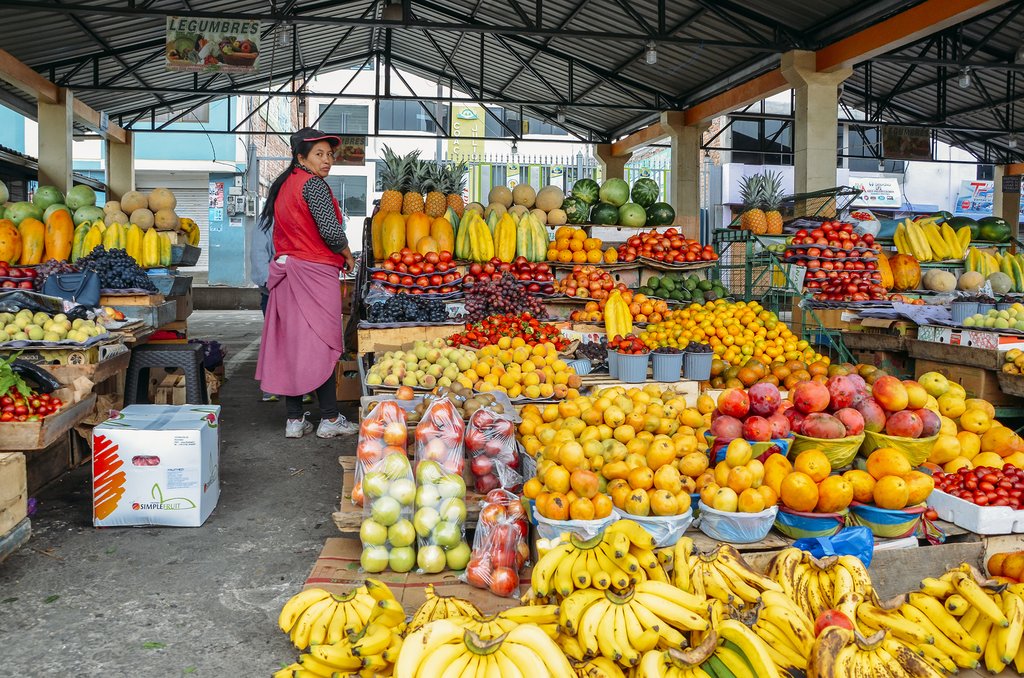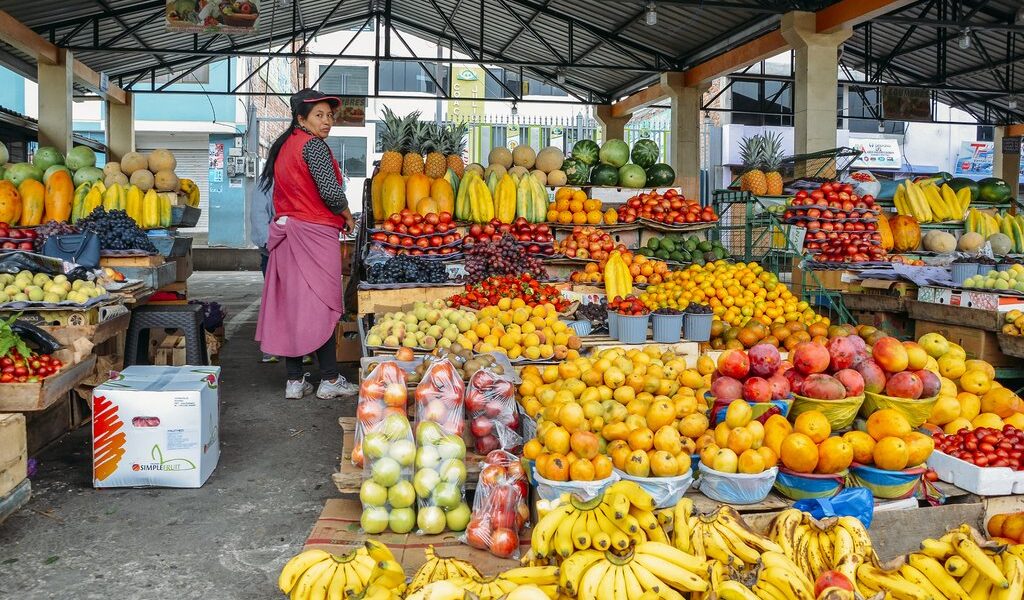
Sip coca tea, chat with vendors in colorful markets, and stay in a historic hacienda: from souvenirs to countryside cuisine, here are some ideas for experiencing authentic Ecuador.
Ecuador, a land of breathtaking diversity and vibrant culture, often sees its first-time visitors gravitating towards the well-trodden tourist paths. There’s undeniable appeal in experiencing the iconic landmarks – embarking on a guided walking tour through the historic Old Town of Quito, a UNESCO World Heritage site, is a must for understanding the city’s rich colonial past. And, of course, no trip to Ecuador is truly complete without setting sail on a yacht in the Galapagos Islands, a unique ecosystem teeming with extraordinary wildlife. However, to truly immerse yourself in the authentic heart of Ecuador, to connect with the soul of the nation, you need to venture beyond the typical tourist itinerary. It requires slowing down, embracing the nuances, and appreciating the subtler aspects of Ecuadorian life, from the comforting ritual of sipping coca tea to the adventurous experience of sampling roasted cuy (guinea pig). Yes, you read that correctly – roasted guinea pig is a local delicacy! Delve deeper as we uncover five exceptional local experiences that will transform your Ecuadorian journey.
**#1 Embrace Coca Culture**
Stepping off the plane in Ecuador, it’s not uncommon to feel a slight disorientation, a mild sense of lightheadedness. This isn’t solely attributable to jet lag. Quito, perched at a staggering altitude of 9,350 feet (approximately 2,850 meters), proudly holds the title of the second-highest capital city in the world. (Only La Paz, Bolivia, surpasses it in elevation.) Locals have long understood the body’s reaction to this altitude and possess a natural remedy: steaming cups of coca tea. Look around as you explore Quito, and you’ll notice locals enjoying this traditional beverage from disposable cups on various street corners. Moreover, in the reception areas of hotels and hostels, the hospitable staff readily offers cups of coca tea to weary travelers arriving from lower altitudes.
The coca plant is deeply rooted in the Andean regions’ history and culture. You’ll find raw or dried coca leaves available for purchase in packets within the local marketplaces. Preparing the tea is a simple process, involving submerging the leaves in hot water, allowing their essence to infuse the liquid. Coca tea offers a subtle and calming effect, often described as an herbal infusion. Its taste is reminiscent of green tea, with a slightly earthy undertone. Accepting a cup when offered and expressing your gratitude with a simple “gracias” (thank you) is a small gesture that demonstrates cultural sensitivity and helps you integrate into the local customs.
A word of caution, however: refrain from attempting to take any coca leaves back to your home country. While coca tea itself is generally considered harmless, the coca plant also serves as the base ingredient for a significantly more potent and, in many countries, illicit substance. Consequently, the possession of any part of the coca plant is strictly prohibited in certain regions, including the U.S. While enjoying coca tea during your stay in Ecuador is perfectly acceptable, attempting to transport the leaves across international borders could lead to complications at border control.
**#2 Embark on an Ecuadorian Culinary Adventure**
You could opt for the familiar comfort of a plate of arroz con pollo (rice with chicken), accompanied by a refreshing bottle of mineral water. However, if you seek a truly authentic Ecuadorian experience, follow the lead of the locals and venture into the diverse world of traditional Ecuadorian cuisine. Be prepared to encounter an array of dishes that range from the intriguing roasted cuy (guinea pig) to the refreshing ceviche served with an unexpected twist: crispy popcorn.
Guinea pig, you ask? Yes, indeed! Cuy is a delicacy in Ecuador, as well as in other Latin American countries, including neighboring Peru. The preparation typically involves flattening the animal, roasting it on a spit, and serving it alongside traditional accompaniments like potatoes, rice, and/or corn. While cuy is more commonly found in rural areas, it’s also offered at street markets and even graces the menus of upscale restaurants in larger cities.
If the idea of sampling roasted guinea pig is a bit too adventurous for your palate at this stage, fear not! Ecuador boasts a wealth of other classic dishes to explore. Seek out llapingachos, delectable potato patties stuffed with cheese, often served with fried eggs and grilled chorizo at unassuming street stands. Llapingachos are also a popular side dish in family-run restaurants, providing a delightful taste of local home cooking.
Ceviche, a staple throughout South America, takes on a unique character in Ecuador. What sets it apart is the addition of crispy popcorn. (A helpful pro tip: the popcorn is not intended as a pre-meal snack. Instead, you are meant to sprinkle the popcorn generously on top of the ceviche, allowing it to soak up the dish’s flavorful citrusy juices, and then savor the combination in each spoonful.)
**#3 Discover Treasures in a Marketplace**
What can you buy in Ecuador’s bustling markets? A more fitting question might be: what *can’t* you buy? Market-hopping is practically a national pastime for Ecuadorians, and it’s an equally rewarding experience for tourists. Whether you’re in search of the perfect woolen poncho, intricately woven and richly colored, or simply seeking to stock up on snacks to fuel your adventures, the markets offer a treasure trove of goods.
The most renowned mercado (market) in the country is located in Otavalo, nestled in the Andean highlands of northern Ecuador. Its accessibility as a day trip destination from Quito makes it a popular choice for visitors. The market is at its liveliest on Wednesdays and Saturdays. The Otavalo marketplace is particularly celebrated for its textiles and artisan crafts, which showcase the artistry and traditions of the region’s indigenous communities. You’ll find an abundance of treasures, including gold-beaded necklaces, jewelry crafted from tagua (palm) nut, soft alpaca blankets, intricately woven gloves and sweaters, hand-painted bowls and gourds, and original artwork reflecting the vibrant culture of the region. While bargaining is generally acceptable, it’s important to do so respectfully, keeping in mind the artisans’ livelihoods.
Even if you don’t have the opportunity to visit one of the larger, well-known artisan markets, make time to explore the local marketplace in whatever town or city you visit in Ecuador. These markets offer a unique glimpse into daily life and a chance to purchase exotic fruits, observe the locals as they go about their business, and strike up conversations with friendly vendors. And don’t forget to bring your camera! Ecuador’s markets are renowned for their vibrant colors and provide countless photo opportunities. You’ll find them in many of Ecuador’s most popular places to visit.
**#4 Experience the Charm of an Old Hacienda**
Ecuador is dotted with old haciendas, grand estates that were built by wealthy Spanish colonials during the 17th and 18th centuries. While some have vanished over time, and others have fallen into disrepair, a significant number have been lovingly restored and transformed into hotels or restaurants that are open to the public. Consider checking into one of these historic gems for a night or two to savor the tranquility and escape the hustle and bustle of modern life.
If your hotel arrangements are already set, consider visiting a hacienda that offers day tours, such as Hacienda Pinasquí. Constructed in 1790, it holds the distinction of being one of the oldest haciendas in the country. Its convenient location near the Otavalo market makes it possible to combine both experiences in a single day. The hacienda also features a restaurant, providing an atmospheric setting to savor a traditional Ecuadorian soup while warming yourself by the crackling open fireplace.
**#5 Acquire a Panama Hat (That’s Actually from Ecuador!)**
Don’t be misled by the name. The Panama hat is, in fact, a product of Ecuador.
The hat was originally meticulously woven using the leaves of a palm-like plant native to the Ecuadorian coast. Later, the same style of hat – brimmed, light in color, and lightweight – was woven from straw and exported to Asia. However, the sailing route for these exported goods took the shipments of hats through Panama. As a result, the hat became associated with the port it passed through rather than its true place of origin.
Pick one up for yourself at a marketplace in Ecuador. The Cuenca marketplace is particularly renowned for its Panama hats (as well as its basketry). Stylish, breathable, and practical, a Panama hat makes an ideal souvenir and a valuable addition to your wardrobe if you’re planning to continue your travels through South America.
Enjoy the exploration!
New word count: 1295
B-707

